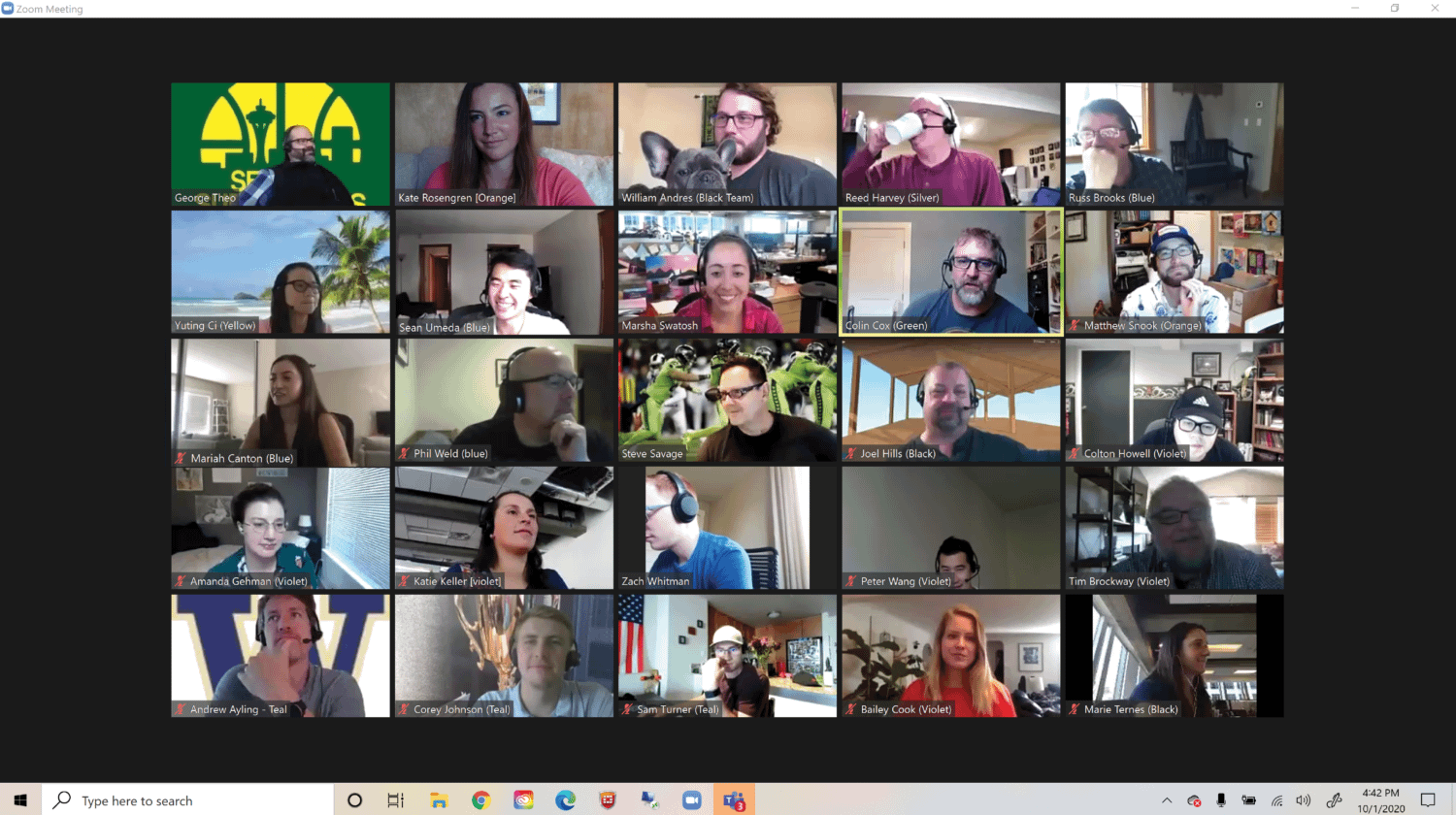4. Maintain Connection, Even from a Distance
With more remote work and virtual meetings than ever, maintaining team camaraderie and connection is a challenge. Nothing can replace in-person collaboration, but little things can go a long way in making staff feel connected. For example, when participating in virtual calls, encourage staff to use video, as seeing faces matters! Take five minutes to reach out to someone you haven’t spoken to recently. Check in. Say hello! Set up options like virtual happy hours for your staff to “gather.” And finally, explore options within your tech platforms.
Within our Microsoft Teams, we’ve set up a “Social” channel that allows staff to chat and share around specified topics. Topics range from the fun (music, pets, gardening, foodies, binge worthy shows, and recipes) to the serious (working parents support group, working-from-home tips, and gratitude).
5. Reimbursement programs
While most organizations have a reimbursement program, many are underutilized. Wellness and tech credits, donation matching, and the coverage of professional development programs are great benefits! And clear, tangible ways to support staff. Make sure the team knows what’s available, and encourage their use!
Additionally, in the light of hobbies and their benefits, look for ways to blur the line. We believe that out-of-industry conferences, classes and experiences can yield just as much benefit as industry events. Is your bike-to-work crew participating in a group ride? Support them. Is your resident VR pro winning Hackathons? Invite him to present to the office. Did your new employee get invited to Indonesia with Build Change? Help him get there.
Even if financial support isn’t realistic, encouragement and genuine interest go a long way!
6. Prioritize Transparency
We think this should be a part of every manager’s training. We want staff to trust us, and we want to trust them. In a culture of true transparency, the principle applies to everything from being honest about workload and stress to staff being comfortable talking about their hobbies and out-of-office activities.
Another important facet of transparency: roles and promotions. Potential career tracks and growth opportunities should be clear, and staff members should have a manager or mentor with whom they’re comfortable speaking about their role.
7. Think Beyond the Happy Hour
We believe that any opportunity to get to know your teammates is a worthwhile one. And we don’t need the excuse of an all-company event to do so. We invest in getting to know one another every day, believing that more we understand one another, the better we motivate one another, challenge one another, and work as a team. More importantly, our work experience will be more rewarding as we connect with our teammates beyond shared projects!
That said, it seems the default for networking and teambuilding events is happy hour. And while we’re not knocking a five-o’clock cheers (we love a good happy hour!), we are suggesting that thinking creatively about when and how your team gathers can pay big dividends.
An all-company event should encourage staff of different levels to connect, provide a positive, common experience, and be welcoming to all. The goal is to find events that resonate with your culture, which means you need to find out what people are interested in. Consider options like a show, a visit to an art gallery or pop-up event, live music, karaoke, a picnic, or a day of volunteering.
Have questions about how to implement these ideas, encourage hobbies or better support your staff? We’re always happy to chat!
